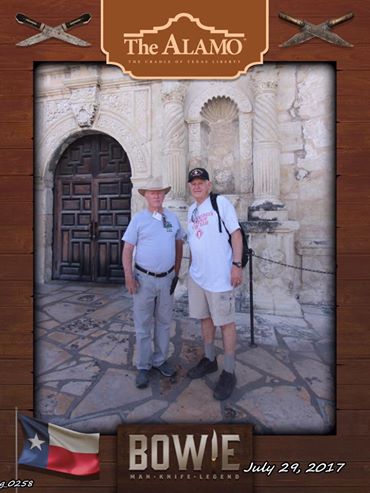|
| I spent the weekend in San Antonio at an annual reunion of the 20th Engineer Brigade in Vietnam. The youngest of those attending was late 60s, and the oldest about my age. In 1969, the 20th Engineer Brigade consisted of about 12,500 men, including about 600 officers, 115 warrant officers, 1,200 senior NCOs and 10,500 junior NCOs. There were also some 3,000 civilian employees.
Almost 50 years ago, these guys were 18-24 years old. They were operating rock crushers and asphalt plants, driving trucks, building roads, operating heavy equipment, clearing land by the square mile with Rome plows, loading barges, building bridge pier protection, repairing bridges, building float bridges, and building base camps and fire bases, all while periodically getting shot at or blown up by mines. They were tough.
In the three-month period ending January 31, 1970, the 20th Engineer Brigade expended over 2 million man hours on construction, 1.2 million man hours on combat and operational support, paved 47.73 kilometers of road, cleared over 30,000 acres of land, crushed nearly 400,000 cubic yards of rock, laid down 71,000 tons of asphalt concrete and placed 6,600 cubic yards of concrete.
The 20th Engineer Brigade included three Engineer Groups, each with five to six battalions, One of those groups, the 159th Engineer Group consisted of the 34th Engineer Battalion, the 46th Engineer Battalion, the 92nd Engineer Battalion and the 169th Engineer Battalion. I worked in the S-3 (Operations Section) of the 159th Engineer group where I served as assistant S-3 and liaison officer. One of my jobs was keeping track of every mission assigned to the 159th and briefing the brigade commander every week on all of the operations of the various units of the 159th Engineer Group, including six quarries and asphalt plants producing materials for road construction.
In response to the buildup of U.S. forces in the Republic of Vietnam, the brigade headquarters was reactivated 1 May 1967, at Fort Bragg and deployed to Vietnam in August 1967. During the Vietnam War, the brigade numbered over 13,000 officers and enlisted men organized into three engineer groups, with 14 battalions and 31 separate companies and detachments. One of these soldiers, Al Gore, would later become Vice President of the United States.
The 20th Engineer Brigade brigade provided all non-divisional engineer support in Military Regions III and IV during eleven campaigns. Units cleared more than one-half million acres (2,000 km²) of jungle, paved 500 kilometers of highway, and constructed bridges totaling more than six miles (10 km) in length. As American forces were withdrawing from Vietnam, the brigade was inactivated 20 September 1971.

Former Army Engineers include truck drivers, crane operators ad quarry operators

Banquet at Fort Sam Houston Golf Club

Fort Sam Houston provided the color guard for the banquet

This was the 25th annual reunion of the 20th Engineer Brigade
For more of what my Vietnam experience was like, see below:
For films of Vietnam 1969-70 by Tom Butt, see:
- Tom Butt, Vietnam 1969-70, HHC 159th Engineer Group, 20th Engineer Brigade
- Mission to Ham Tan, Vietnam 1969
- Construction of Corduroy Road, MSR Zinc, Vietnam 1969
- Saigon from the Rooftop1969
- The Streets of Saigon 1969
- Mission to Vung Tau, Vietnam 1969
- Party for Children of Mama Sans, Long Binh, Vietnam 1969
- Vietnam from Above 1969
- Phu Cuong Float Bridge, Vietnam 1969
- Changing of Command, 159th Engr. Gp., Vietnam 1969
- R&R in Sydney, New Year 1970
For films of the long trip home, 1970, see:
For my personal story of military service, see “Before and After Vietnam, Military Experiences of Thomas K. (Tom) Butt.”
I couldn’t resist spending some time at the River Walk, one of the greatest public spaces on earth. Floods had devastated downtown San Antonio in the early 20th Century, and the river that had led to the city’s location had become a dump. A visionary San Antonio architect, Robert Hugman provided the plan that became today’s River Walk, the heart of San Antonio tourism. The River Walk has inspired similar projects in other cities, such as the Little Sugar Creek Greenway in Charlotte, North Carolina, the Cherry Creek Greenway in Denver, Colorado, and the Santa Lucía Riverwalk in Monterrey, Mexico.

San Antonio River Walk.
I also took a quick tour of the Alamo, Texas’ shrine to independence.
 
I knocked out a couple of books on the airplane, the first, “Road Gang,” the memoir of an officer in the 34th Engineer Battalion who spent much of his tour building Highway 1A/2A, the same time I was in Vietnam.

The second, “Strangers in Their Own Land,” by Arlie Russell Hochschild, a Berkeley sociologist who spent five years in Louisiana trying to understand what motivates Tea Party and Trump voters, to vote against what are popularly regarded by liberals as their own self interests. This is something everyone should read. Hochschild uses the metaphor “cutting in line” to explain the anger of white men, particularly in the South, who believe they have worked hard, maintained their values and pursued their religion only to find that others are “cutting in line” in front of them, including blacks, immigrants, LGBT people and welfare moochers. Couple that with a strong distrust and suspicion of government in general and the federal government in particular, and you have the movement that elected Trump.
Hochschild goes to great lengths to explain that these are not bad people, they just have a heritage and a belief system that comes from a different place than that of you and me.
It was particularly apropos, as I estimate probably 90 percent or more of those attending the 20th Engineer Brigade Reunion were Trump voters.

It was 106 degrees F in San Antonio, and I am glad to be home to a cool climate.
|
|

